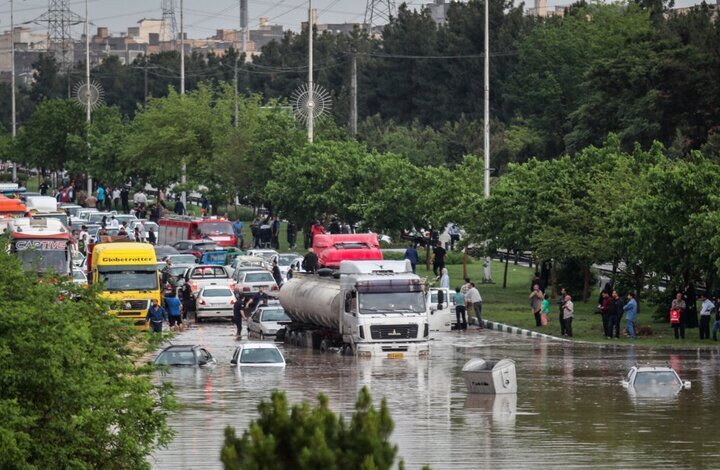Iran floods ‘driven by El Niño but probably exacerbated by climate change’: report

TEHRAN - El Niño was the primary driver of extreme rainfall in April and May that caused widespread flash flooding across Iran, as well as Afghanistan and Pakistan, doubling the chance of extreme rainfall, a new World Weather Attribution study found.
Throughout April and May, West Asia was hit by several storms. Flash floods killed at least 500 people in Afghanistan, 124 in Pakistan, and 18 in Iran, destroyed thousands of homes, and wiped out crops, worsening food shortages and threatening agricultural livelihoods.
The study also found that rainfall in the area affected had become 25 percent heavier in the last 40 years, increasing the risk of devastating flash floods.
Although it could not find definitive proof that climate change was responsible for the heavier rain, scientists behind the study said climate change was the “probable explanation”.
In addition, drought conditions in many areas prior to the floods – which exacerbated the impact of the subsequent rainfall – were driven by climate change, an earlier report found.
Necephor Mghendi, the IFRC’s Head of Delegation for Afghanistan, said: “The findings by World Weather Attribution highlight the critical factors behind the deadly flooding in Afghanistan, emphasizing the increased rainfall from April to May, the influence of El Niño, and the country’s high vulnerability to climate-related disasters.
“In response to the severe flash floods that began on 16 April and intensified on 10 May 2024, the IFRC launched an emergency appeal to address the escalating humanitarian needs in the north-east region of Afghanistan.
“These floods have compounded the already challenging situation faced by Afghan communities, underscoring the urgent need for comprehensive and sustained humanitarian assistance.
“Despite Afghanistan’s minimal contribution to global climate change, it remains one of the most vulnerable countries to its impacts, as reflected in the Notre Dame Global Adaptation Index.
“Our efforts are focused on providing immediate relief and supporting long-term resilience to help communities withstand and recover from these devastating events.”
Maja Vahlberg, a climate risk consultant at the Climate Centre and a contributor to the WWA report, added: “Flash flooding occurs fairly frequently in winter and spring in Afghanistan, Iran and Pakistan.
“However, the recent floods caused a huge number of deaths, particularly in Afghanistan. Improving early warning systems and increasing flood-resilient infrastructure will help at-risk communities avoid the worst impacts of flash floods in the future.”
MG
Leave a Comment